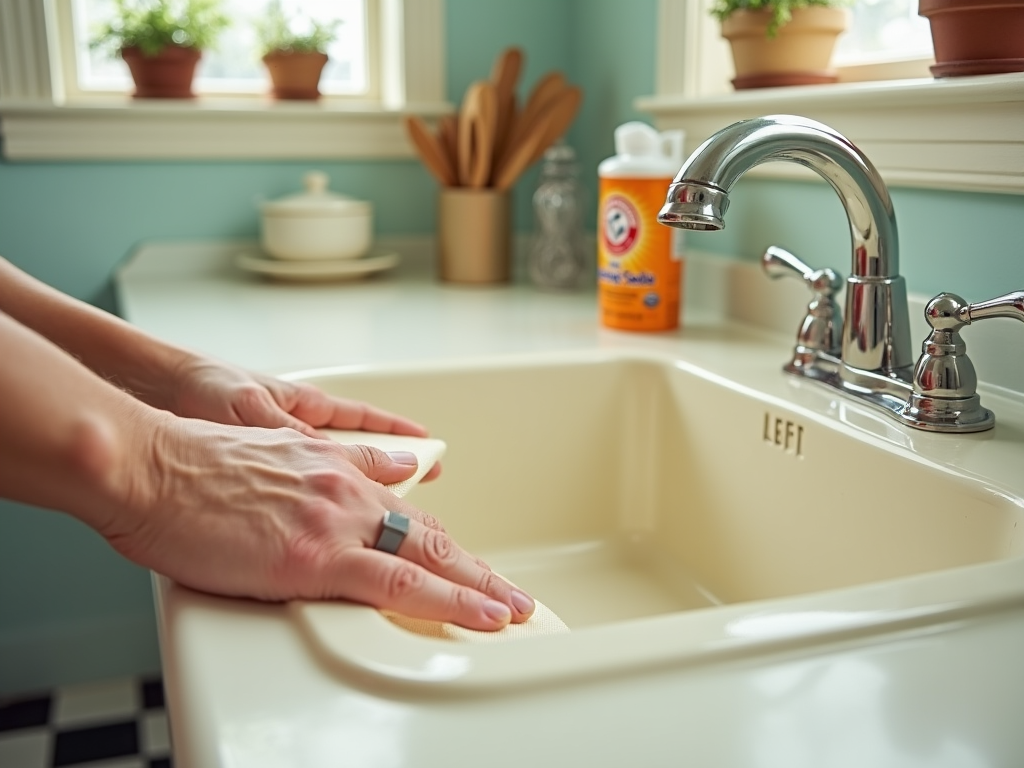A kitchen sink is an essential part of any household, handling everything from dirty dishes to food scraps. Due to its frequent use, it’s crucial to clean your kitchen sink regularly to maintain a hygienic food preparation area. But the question is, how do you clean a kitchen sink properly, irrespective of the material? This article will walk you through effective cleaning strategies tailored for different types of sink materials, ensuring you have a spotless sink every time.
Understanding Different Sink Materials

The first step in cleaning your kitchen sink effectively is understanding the material it is made from. Common materials include stainless steel, porcelain, granite, and composite. Each material has unique properties that affect how you should clean and maintain them. Stainless steel is known for its durability and resistance to stains and rust, while porcelain, though elegant, can be more susceptible to scratches. Granite and composite sinks add a touch of luxury and color but require specific care to prevent damage and discoloration. Keeping these differences in mind will ensure that you’re using the right method and products for cleaning.
General Steps for Cleaning Any Type of Sink

Despite the differences in materials, there are general steps you should follow to clean any kitchen sink effectively. Start by rinsing the sink thoroughly with warm water to remove loose debris. Apply a mild detergent or dish soap with a soft sponge, avoiding abrasive scrubbers that could scratch the surface. For extra cleaning power, especially for stubborn spots, consider using a homemade paste of baking soda and water, applying it gently and rinsing thoroughly thereafter. Don’t ignore the faucet and drain—use a good disinfectant to wipe down these areas as well. Finally, rinse away any soap residue with warm water, and dry the sink with a clean towel to prevent water spots and staining.
On occasion, a deep clean is necessary to ensure your sink is sanitized and free from bacteria build-up. This process requires some additional steps to provide a deeper level of cleanliness. Firstly, fill the sink with hot water and add a cup of bleach or a quality sink-safe disinfectant. Let this solution soak for about 5-10 minutes. Use this time to scrub any stubborn grime off with a non-abrasive scrub pad. Drain the solution and rinse the sink thoroughly with clean water to remove any residue. Rinse the faucet, handles, and surrounding counters as well. To finish, towel dry these surfaces to prevent streaks and further water staining.
Specialized Cleaning for Different Materials
To maintain the quality of your sink, it’s essential to follow cleaning practices specific to its material. Here’s a quick guide:
- Stainless Steel Sinks: Use a vinegar and water solution for shine and to remove streaks. Buff with a dry cloth to maintain its polished look.
- Porcelain Sinks: Use a non-abrasive cleaner and always dry after cleaning to prevent water spots.
- Granite and Composite Sinks: Use a mild detergent and warm water. Avoid acidic cleaners that could etch the surface. Regular sealing can also maintain their condition.
Prevention Tips to Keep Your Sink Looking New
Preventing stains and damage is key to keeping your kitchen sink in top condition. First, always wipe down the sink after use to remove water and residues that can cause spots and corrosion over time. Use sink mats or pads to protect the bottom surface from scratches and damage caused by heavy pots and pans. Avoid leaving acidic foods or cleaning agents on the sink’s surface for too long, as these can damage certain materials. Implement regular sealing for types like granite to keep them resistant to stains and scratches over time. With consistent preventive care, your sink will look new for longer.
Conclusion
Proper maintenance of your kitchen sink, regardless of its material, is vital in keeping your kitchen hygienic and visually appealing. By understanding the specifics of your sink’s material and applying the appropriate cleaning methods, you can ensure that your sink remains clean, functional, and in excellent condition. Regular cleaning, preventive measures, and occasional deep cleans will extend the life of your sink and enhance your kitchen’s overall aesthetic.
Frequently Asked Questions
1. Can I use bleach on all sink materials?
Bleach can be used on most sinks for deep cleaning, but it should be used with caution on granite and composite sinks as it can damage the surface.
2. How often should I deep clean my kitchen sink?
For regular maintenance, deep cleaning your sink once a month should be sufficient. However, increase frequency if your kitchen sees a lot of use or if you notice more buildup than usual.
3. What’s the best way to prevent water spots on stainless steel sinks?
After each use, dry your stainless steel sink with a cloth to prevent water spots and consider using a water and vinegar solution for occasional polishing to maintain a spot-free shine.
4. How do I remove rust stains from my sink?
A paste made from baking soda and water or a commercial rust remover can be effective for removing rust stains. Apply gently with a sponge and rinse thoroughly.
5. Is it necessary to seal granite sinks?
Yes, sealing granite sinks periodically is necessary to protect them from stains and water damage and maintain their natural beauty.
